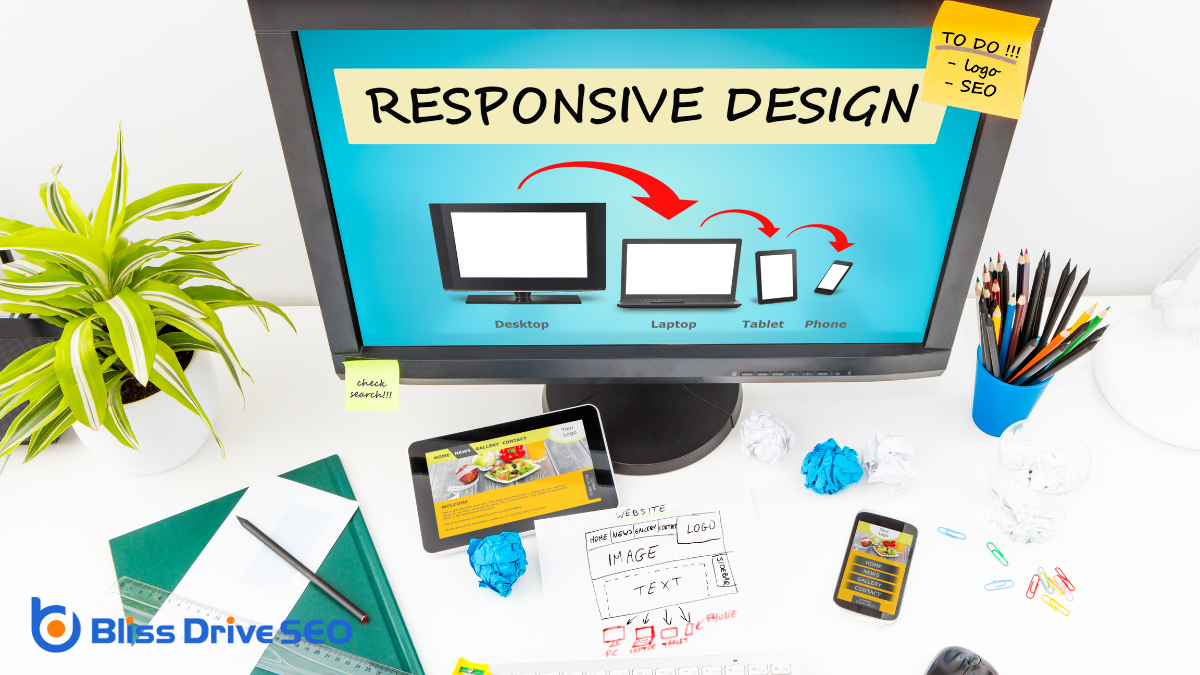Learn More About Us

You've probably wondered what it takes to excel as a web designer. It's not just about having an eye for aesthetics; there's a technical side that's equally crucial. You need to master HTML and CSS to create and style web pages effectively. But that's just the beginning. Understanding user experience principles can elevate your designs from good to great. And then there's the matter of design tools like Adobe XD and Figma, which are indispensable. But what about responsive designA web design approach that makes web pages render well on a variety of devices and window or screen ... or SEO skills? There's more to uncover, and it's important to grasp how these elements intertwine.
Visual design is the foundation of effective web design, and it's important to understand its basics. You need to grasp the principles of layout, color theory, typography, and imagery. These elements work together to create a visually appealing and coherent design that captures your audience's attention.
Start with layout. It's all about organizing content in a way that's easy to navigate. You should focus on creating a balanced structure, paying attention to spacing and alignment. Using grids can help maintain consistency throughout your design.
Color theory is vital. Colors evoke emotions and set the mood for your website. You'll want to choose a color palette that aligns with the brand's identity and message. Understanding complementary and contrasting colors will enhance readability and visual interest.
Typography involves selecting fonts that complement your design. It's not just about aesthetics; readability is key. Choose fonts that are legible and fit the overall style to guarantee a seamless experience for users.
Imagery should support your content, not distract from it. Use high-quality images that reinforce your message. Consistency in style will create a unified look and feel, making your website more effective and engaging.

When designing a website, understanding user experience (UX)The overall experience a user has when interacting with a website or application, including usabilit... is essential. UX focuses on how users interact with a website, aiming to make their experience smooth, intuitive, and enjoyable. To achieve this, you need to put yourself in the user's shoes. Consider what they want to accomplish and how easily they can do it.
Keep in mind that a website should be easy to navigate, visually appealing, and responsive across different devices.
Start by researching your target audience. Know their needs, preferences, and the challenges they face. This information will guide your design decisions, helping you create a site that feels personal and relevant.
Next, focus on simplicity. Avoid cluttered layouts and overwhelming users with too many choices. Instead, present information clearly and guide users through the site with a logical flow.
Pay attention to feedback. Conduct usability tests and surveys to gather insights about user experiences and identify areas for improvement.
Mastery of HTML and CSS is the foundation of web design. If you're aiming to build engaging and responsive websites, these languages are your starting point.
HTML, or HyperText Markup Language, structures your web content. It's the backbone that dictates how text, images, and other elements appear on a page. CSS, or Cascading Style Sheets, complements HTML by styling your content. It's what makes your website visually appealing, defining everything from colors to layout.
To effectively harness the power of HTML and CSS, consider the following steps:
As you plunge into HTML and CSS, remember that practice and patience are key. These languages might feel intimidating at first, but with dedication, you'll soon craft stunning and functional web designs.
Embrace the learning curve, and you'll lay a strong foundation for your web design journey.
A vital component of web design is proficiency in design tools, as they streamline your workflow and enhance creativity. When you become adept at these tools, you can transform your ideas into engaging web designs more efficiently.
Essential tools like Adobe Photoshop, Adobe Illustrator, and Sketch are foundational for creating visually appealing graphics. These tools allow you to manipulate images, design logos, and create layouts that capture your audience's attention.
Understanding software like Figma and Adobe XD is essential for prototyping and wireframing. These platforms help you visualize the structure of a website before any coding begins. They enable you to experiment with different layouts and user interfaces, ensuring your designs are both functional and visually pleasing.
Additionally, familiarizing yourself with content management systems (CMS) like WordPress can greatly boost your web design skills. These systems offerThe specific product or service being promoted by affiliates. various templates and plugins, simplifying the process of building and maintaining websites.
Don't overlook the importance of practicing and exploring new features within each tool. As these tools evolve, staying updated helps you maintain a competitive edge.

Responsive design is essential in today's multi-device world. As a web designer, you need to guarantee that your website looks and functions well across various screen sizes and devices.
By mastering responsive design techniques, you'll create a seamless user experience that keeps visitors engaged. Here's how to get started:
1. Use Flexible Grids and Layouts****: Begin by using relative units like percentages instead of fixed units like pixels. This approach allows your design to adapt smoothly to different screen sizes.
2. Implement Media Queries****: Media queries enable you to apply specific styles depending on the device's characteristics, such as screen width or orientation.
By setting breakpoints, you can guarantee that your design evolves smoothly on different devices.
3. Optimize Images and Media: Large images can slow down your site, especially on mobile devices.
Use responsive image techniques, such as the '
To be an effective web designer, you need a basic understanding of JavaScript syntax.
This knowledge allows you to create dynamic features that enhance user interactionAny action taken by a user on social media, such as likes, comments, shares, or retweets. and engagementThe interactions that users have with a brand’s content on social media..
Grasping JavaScript syntax is a fundamental skill that propels you forward in web design. With a solid understanding, you'll be able to create interactive and dynamic web pages. JavaScript syntax forms the foundation of how you'll write scripts that enhance user experiences. Here's what you should focus on to understand the basics:
Ever wondered how websites come alive with animations and interactive elementsElements that require user interaction, such as buttons, forms, and sliders.? It's all about implementing dynamic features using JavaScript. By understanding basic JavaScript, you can make your web designs much more engaging and user-friendly.
When you add interactive features, like slide shows, form validations, or dynamic contentEmail content that changes based on the recipient's preferences or behavior. loading, you enhance the user experience and make the site more functional.
To start, focus on understanding how JavaScript manipulates the Document Object Model (DOM). This knowledge lets you dynamically change the content, style, and structure of web pages without needing to reload them.
For example, you can create dropdown menus that open smoothly when clicked or buttons that respond to user actions.
You'll also need to learn how to work with events. Events are actions that users or the browser perform, like clicking a button or loading a page.
To be an effective web designer, you need to grasp the basics of SEO to guarantee your designs attract visitors.
Using analytics toolsSoftware used to track and analyze website performance, user behavior, and marketing efforts. helps you understand how users interact with your site and what improvements are necessary.
Search engines are the gateways to the internet, and understanding SEO basics is vital for a web designer.
SEO, or search engine optimization, guarantees that your website ranks well in search results, driving more traffic and enhancing visibility.
As a web designer, you need to grasp the foundational elements of SEO to create sites that aren't only visually appealing but also easy to discover.
Here are three key SEO basics you should focus on:
When it comes to enhancing your web design skills, understanding how to use analyticsThe systematic computational analysis of data or statistics to gain insights and support decision-ma... tools is essential. These tools help you gather data on how users interact with your website, allowing you to make informed design decisions. By analyzing metrics like bounce rates, session durations, and conversionThe completion of a desired action by a referred user, such as making a purchase or filling out a fo... rates, you'll gain insights into what's working and what needs improvement.
Start by familiarizing yourself with popular tools like Google AnalyticsA web analytics service offered by Google that tracks and reports website traffic.. It provides detailed reports on user behavior, traffic sources, and more. With this information, you can optimize your site for better performance and user experience.
For example, if you notice a high bounce rateThe percentage of visitors who leave a website after viewing only one page. on a particular page, you might need to re-evaluate its design or content.
Additionally, learning how to use heat maps can be insightful. They show where users click, scroll, and move on your page, revealing areas of high engagement and those overlooked. This data helps you redesign elements for better interaction.
To excel as a web designer, you need to blend creativity with technical skills. Master HTML and CSS to build and style web pages, and grasp visual design basics to enhance your site's aesthetic appeal. Use tools like Adobe XD and Figma for design and prototyping, and guarantee your work is responsive and user-friendly. A basic understanding of JavaScript and SEO will further boost your effectiveness, making your designs both engaging and functional.
